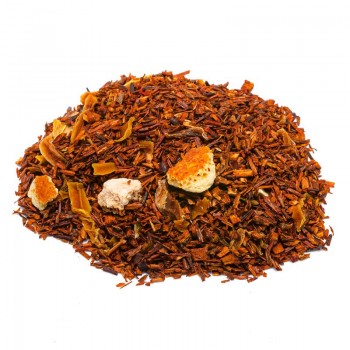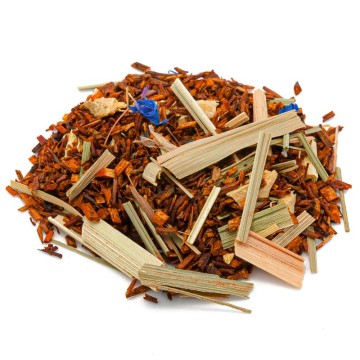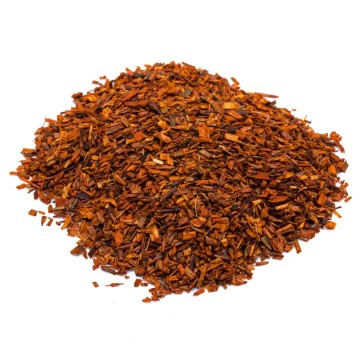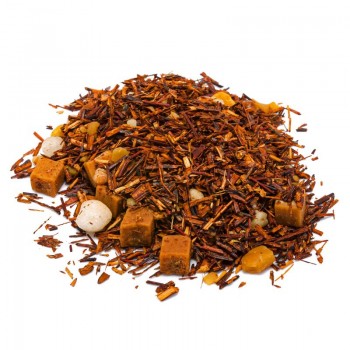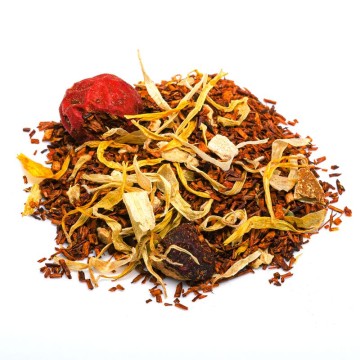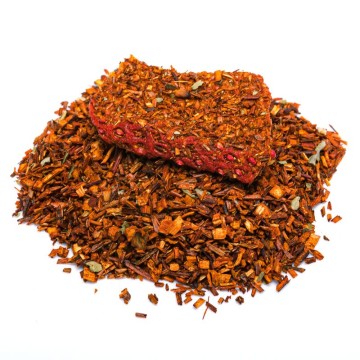Characteristics of the ingredients of the Rooibos lemon and orange infusion
A blend for tea and citrus lovers, both orange and lemon are known for their vitamin C content (although vitamin C is thermolabile), as for the other properties, especially those contained in the peel that we find in this preparation, lemon is considered above all a purifier and an antioxidant, while orange has calming and antispasmodic properties. Although they are now widespread in all hot countries, citrus fruits are known to originate from the Far East, it is no coincidence that the scientific name of the bitter orange is Citrus sinensis (sinesis means Chinese). The scientific name of the lemon is Citrus limon. To be precise, the names of the two plants should actually be written like this: Citrus x sinensis and Citrus x limon, the x in the name of a species indicates that it is a hybrid, one thing that many do not know is that genetic studies seem to indicate that almost all species of the Citrus genus, that is, citrus fruits, would be hybrids, natural or created by man, according to some the original species of citrus fruits would be only three: the mandarin, the pomelo and the citron. The orange would be a hybrid between pomelo and mandarin, the lemon is believed to be a hybrid between orange and citron.
The orange is probably the most cultivated fruit in the world, just think of the massive production in Southern Europe (Southern Italy and Spain) and the even more massive production in the two US states with the most suitable climate, Florida and California. Yet cultivation in Europe only spread massively in the mid-1600s.
So orange and lemon, as we have said, are fruits now widespread everywhere but are originally from the Far East, while rooibos has only recently begun to be known in the world and is commonly known as African red tea, it is in fact an infusion obtained from a plant native to the Cederberg region in South Africa. The scientific name of the plant from which rooibos is obtained (the name indicates both the plant and the infusion obtained from it) is Aspalathus linearis, the adjective linear in the scientific name simply indicates that the leaves are elongated. The name rooibos, which in Afrikaans means red bush, instead tells us some interesting things, the leaves of the Aspalathus are green not red, but they become red with the fermentation that precedes drying in the manufacturing process, this combined with the fact that there is no name in the languages of the indigenous peoples for rooibos (Afrikaans is the language spoken by the Dutch settlers and their slaves) leads to the belief that the natives perhaps knew the plant but that its use as a drink was invented by the settlers who were looking for a substitute for tea. In fact, rooibos, although deriving from a plant that is not even related to that of real tea, has a flavor that is not very different which is defined as having a hint of tobacco and a character that tastes of earth, however it has the notable advantage over tea of not containing caffeine.

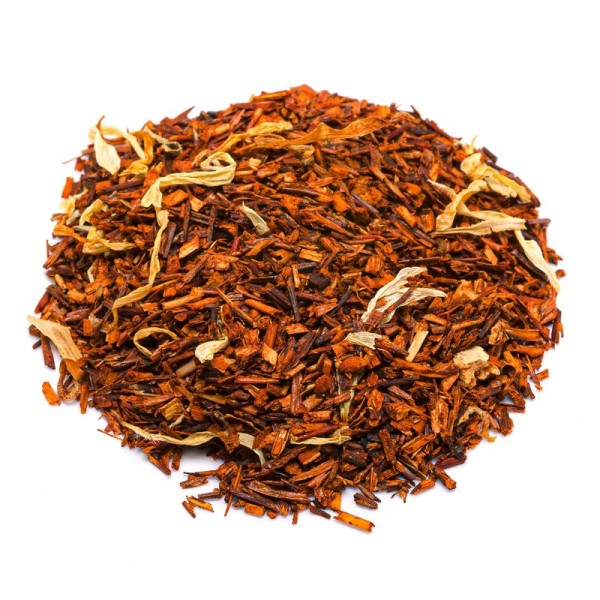









 No reward points for this product.
No reward points for this product.


![rooibos cioccolata calda [Natura d'Oriente]](https://www.naturadoriente.com/3513-home_default/rooibos-hot-chocolate.jpg)
